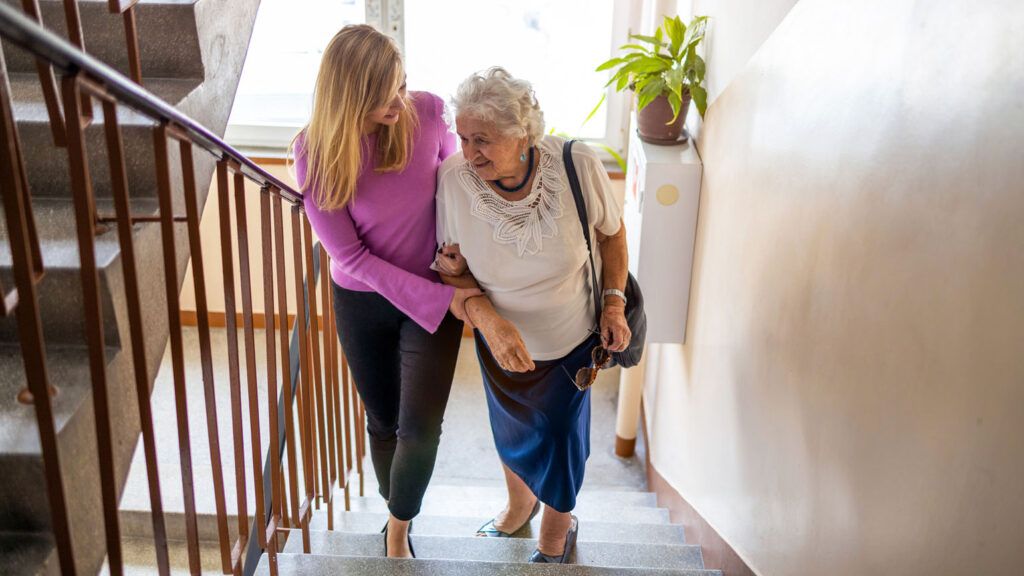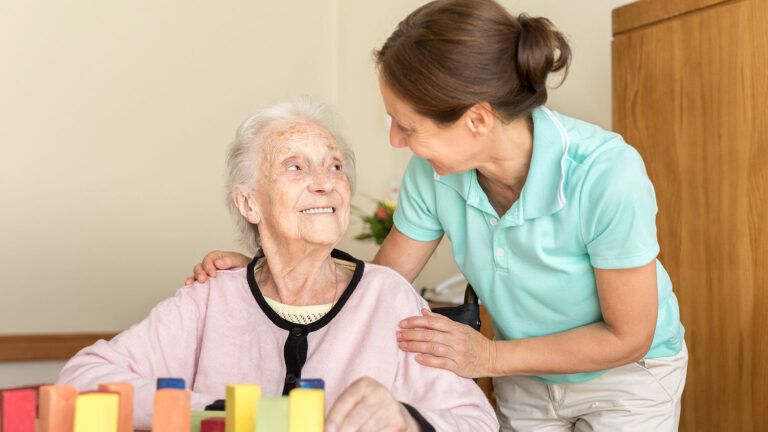This article is based on information provided by Philips Lifeline.
For older adults, falling is an all-too-common issue with potentially severe consequences, including head injuries and broken bones. Every year, one- third of people over age 65 suffer from falls. According to the National Institute on Aging, fall chances increase along with the number of risk factors someone has. Such factors include several chronic and acute illnesses and conditions, from dementia and cardiovascular diseases to high blood pressure and visual impairments.
When you understand how these factors can contribute to falls, you can help your loved one to avoid getting injured in a tumble. Following are some illnesses and conditions that can increase fall risks:
Vision Problems
Vision impairments associated with aging can lead to falls. Studies indicate that individuals with visual deficits are 2.5 times more likely to fall. Cataracts, glaucoma, and anisometropia are among the conditions that can affect depth perception, peripheral vision, and visual acuity. New eyeglasses, particularly those with multi-focal lenses, can also alter depth perception. So it’s crucial for older adults to have regular eye exams and to keep prescriptions for glasses current. Clear vision is important to getting around without having an accident.
Neuropathy
Some medical conditions can lead to sensory problems like tingling, numbness, weakness, or burning pain in legs and feet. This is referred to as peripheral neuropathy. It can be caused by diabetes, kidney failure, and shingles, among other conditions. Neuropathy can lead to falls because it makes it difficult to know where you’re walking. Having shoes with proper stability, grip, and balance can help to avoid falls.
Cardiovascular Disease
Underlying cardiovascular disorders can also increase fall risks among older adults. Those who have had walking and balance disorders can be unsteady on their feet. A sudden loss of consciousness can also lead to falls. Among the cardiovascular issues that can contribute to falls are:
- Cardiac arrhythmia
Cardiac arrhythmia is a disorder of the heart rate rhythm. As a result, the heart may beat irregularly, too fast (tachycardia), or too slow (bradycardia).
- Orthostatic hypotension
Orthostatic hypotension (also called postural hypotension) is a form of low blood pressure. It can lead to dizziness or light-headedness upon standing up from a lying-down or seated position.
- Structural heart disease
Structural heart disease, also known as congenital heart disease, is a deficiency of the heart muscle or heart valves. It causes unusual blood flow through the heart, which can lead to generalized weakness or loss of consciousness. It’s important to get regular cardiovascular screenings. Catching cardiovascular issues early helps to ensure proper treatment, which can, in turn, minimize fall risks.
Alzheimer’s Disease and Other Forms of Dementia
Cognitive impairment from forms of dementia including Alzheimer’s disease can cause falls because of confusion. Researchers from the Rand found that people with cognitive impairment had a 1.8 times higher risk of falls. This condition can also cause physical deconditioning, gait changes, poor balance, memory impairment, poor judgment, and visual misperception. All these issues increase fall risk. As with cardiovascular disease, it’s important to recognize the signs of cognitive impairment early on. The effects of dementia can be lessened when your loved one has clear communication with caregivers and stays mentally stimulated. This can help boost physical well-being and overall quality of life, as well.
Chronic Illness
Certain chronic illnesses can also increase fall risks. Among them are:
- Parkinson’s Disease
Parkinson’s disease is a neurodegenerative disease. It causes a progressive deterioration of muscle function due to decreased dopamine in the brain. According to the Parkinson’s Disease Foundation, motor symptoms include stiffness, tremor, postural changes, slowness, impaired balance, and shuffling gait. It can also cause changes in the center of gravity. All of these symptoms can increase fall risk.
- Arthritis
Arthritis causes painful stiffness and inflammation in the joints. The most common form of arthritis is osteoarthritis, in which the protective cartilage at the end of bones wears down, causing impaired movement and pain. This typically occurs around the knees, hips, spine, and hands. Research indicates that arthritis can increase the risk of falling by 2.4 times. Remaining active and getting massages can be helpful arthritis remedies.
- High Blood Pressure
Hypertension (high blood pressure) can also contribute to falls. Studies have shown that as many as 20% of all falls were associated with hypertension. According to the Centers for Disease Control (CDC), almost half of all adults in the U.S. have hypertension, so it doesn’t just affect older people. Making improvements to lifestyle, diet and fitness, taking certain medications and wearing compression stockings, can all help to alleviate high blood pressure.
Acute Illness
Acute illnesses could account for up to 20% of falls, according to studies. An acute illness, like an ear or chest infection, can bring about fatigue, dizziness, and weakness. Each of these factors can lead to falls. On the flip side, an unexpected fall may be an indication of an acute illness. Older adults should alert caregivers, if possible, when they’re feeling ill.
Even though acute infections can be identified as a result of early symptoms, certain illnesses like asymptomatic bacteriuria can be more difficult to spot. This is caused by bacterial colonization in the urinary tract but doesn’t include symptoms of a urinary tract infection. Asymptomatic bacteriuria is common in older adults. If you’re concerned that this may have caused a fall, make sure to see a physician and provide a urine sample for diagnosis.
Sarcopenia
Older adults are more likely to experience sarcopenia, and it’s a major contributing factor to falls for them. This syndrome causes the general loss of strength and skeletal muscle mass. The good news is that resistance exercises can alleviate and possibly even reverse this syndrome. So it’s another reason for older adults to get regular exercise. All of these medical conditions can affect the risk of falling. If your loved one has experienced any of these issues, make sure to discuss them with a healthcare professional. A medical alert system can also ensure that if your loved one does fall, help is on the way, day or night. All it takes is the simple click of a button.
Disclaimer: Don’t disregard professional medical advice, or delay seeking it, because of what you read here. This information is not intended as a substitute for professional consultation, diagnosis or treatment; it is provided “as is” without any representations or warranties, express or implied. Always consult a healthcare provider if you have specific questions about any medical matter and seek professional attention immediately if you think you or someone in your care may be experiencing a medical condition or healthcare emergency.






